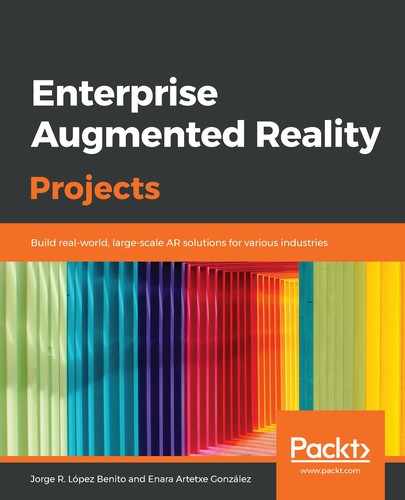Vuforia's main feature that's used to place virtual objects on the user's environment in real time is called Ground Plane. We are going to use this feature to create an app to place 3D content on horizontal surfaces of the real world, such as floors and tables.
Starting with Vuforia 7, the SDK introduced a new capability, called Vuforia Fusion, to improve the performance of spatial recognition according to each device's features, including cameras, sensors, chipsets, and internal AR frameworks. Vuforia Fusion tries to detect integrated frameworks such as ARKit (iOS) or ARCore (Android), which offer the best performance. If none are found, it tries to use VISLAM and SLAM, respectively.
Although the list increases quickly, not all devices support Vuforia's Ground Plane yet. In general, if the running device supports ARCore or ARKit, it will work. If not, it will depend on internal AR-enabling technologies. Vuforia keeps a list of the currently supported devices on its web page: https://library.vuforia.com/articles/Solution/vuforia-fusion-supported-devices.html.
In the next subsection, we are going to learn how to enable ARCore in Vuforia. If your device doesn't support ARCore, you can directly skip to the next subsection. If you are planning to distribute your app among ARCore-supporting and -non-supporting devices, and want to test Vuforia's VISLAM performance first, skip this step and do this after testing the final app to see the difference.
